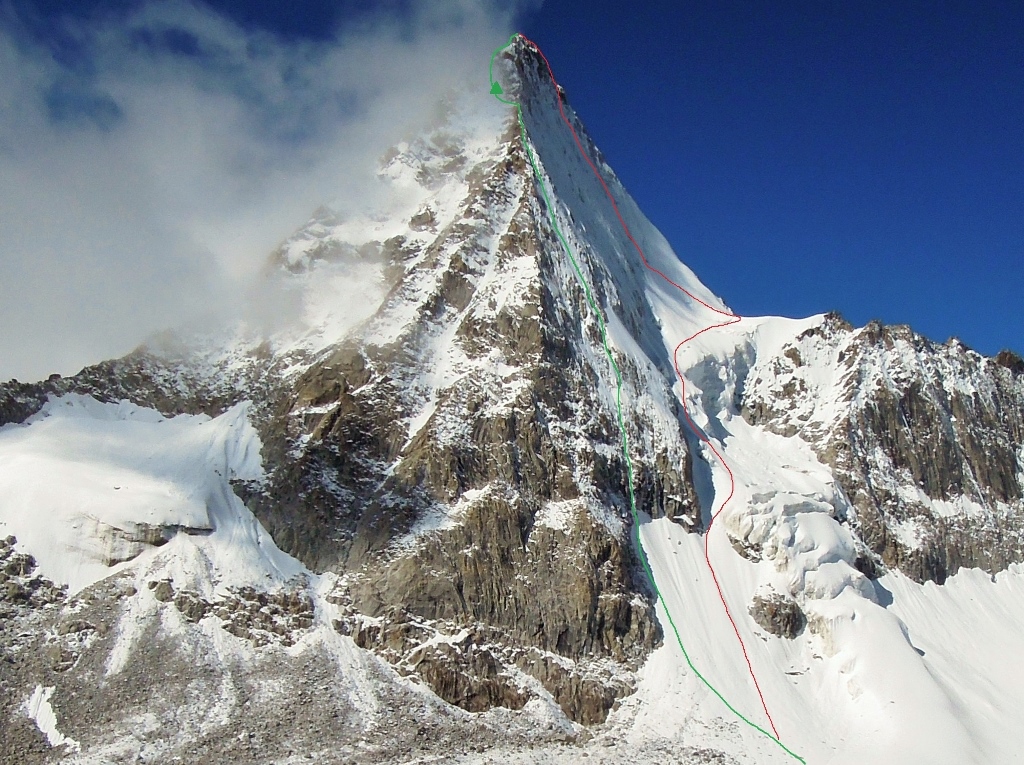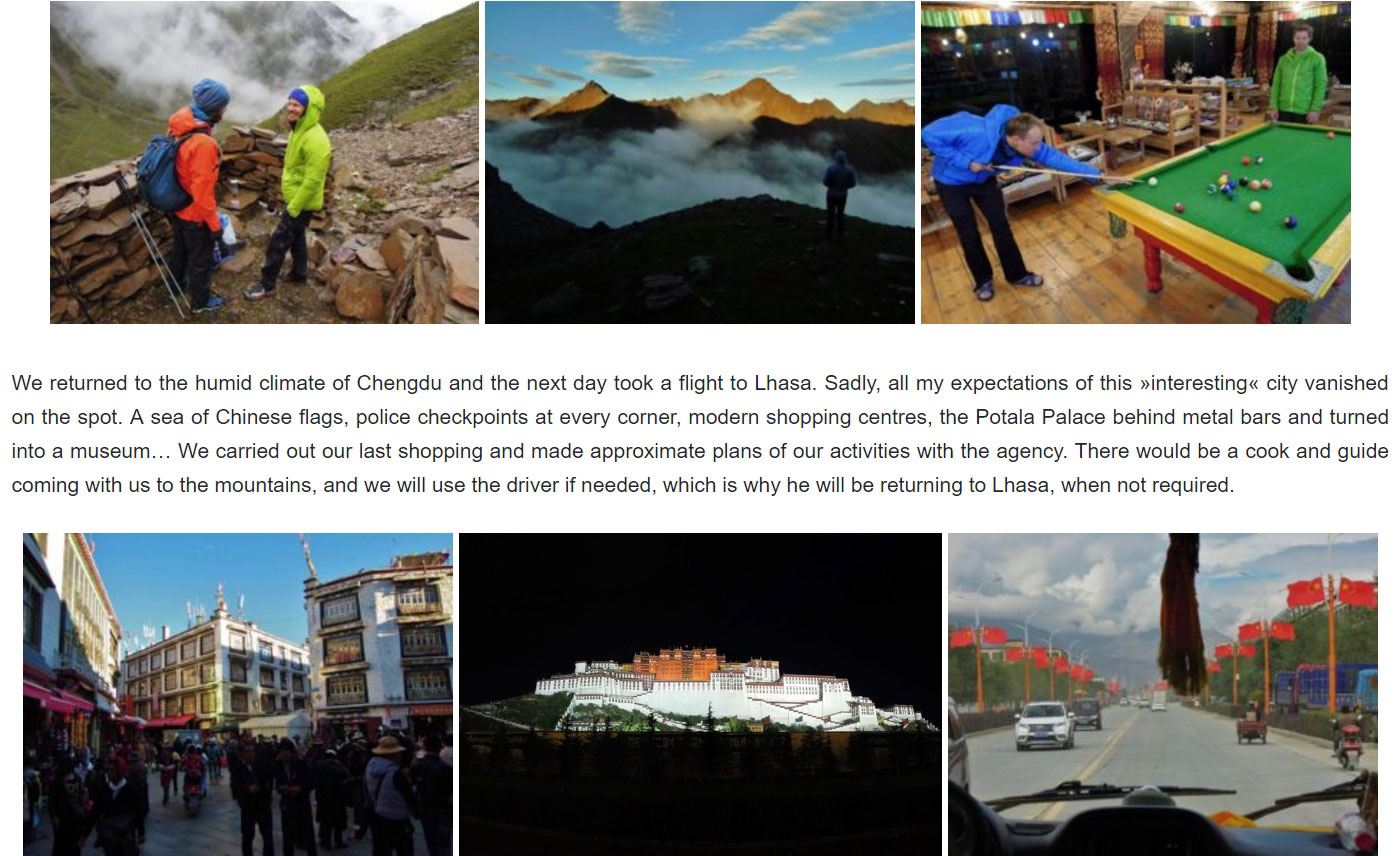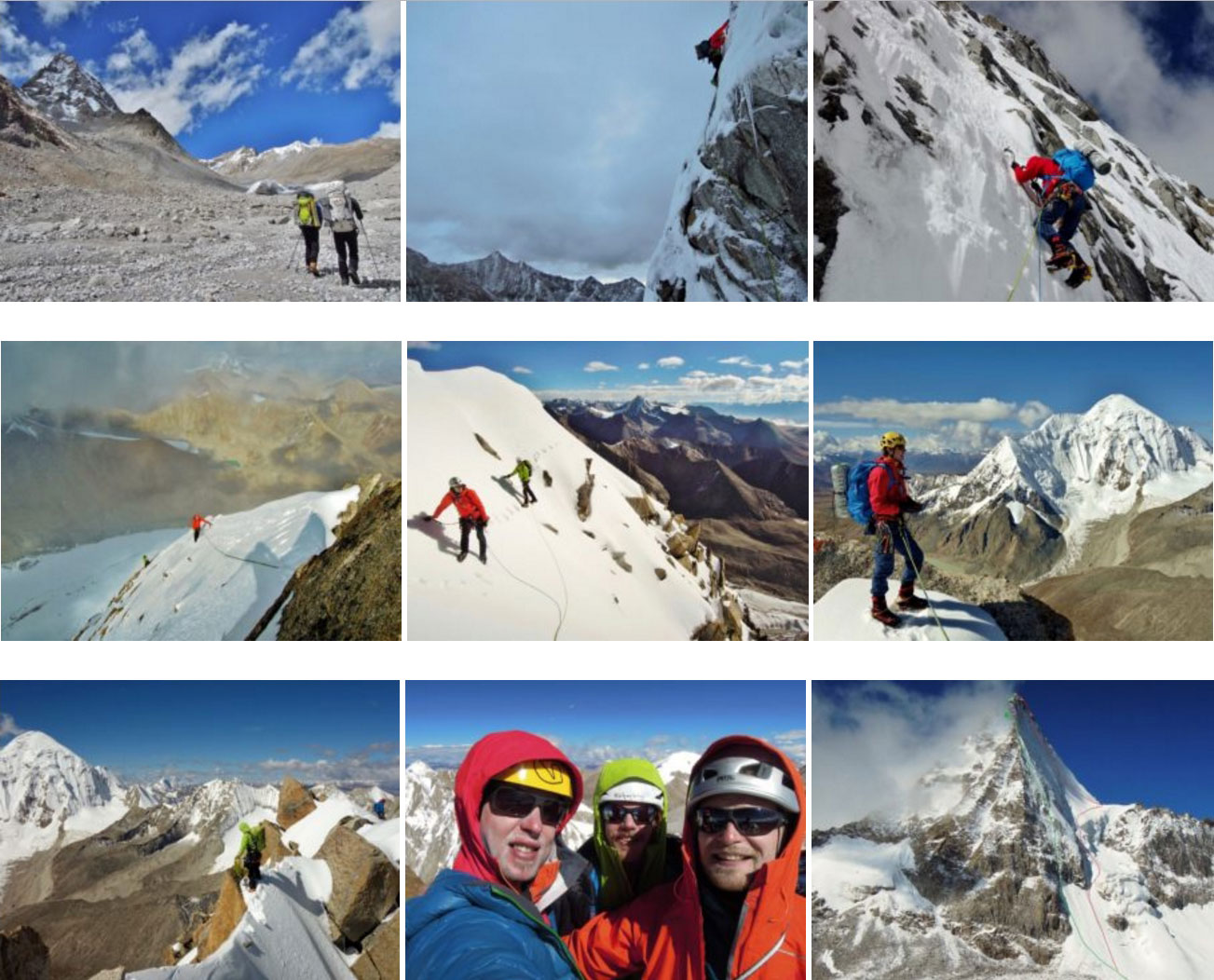 ALTAMANIA: Two expedition plannings earlier this year for different climbing objectives in Nepal have proved fruitless, all the climbing partners have bailed. ...
ALTAMANIA: Two expedition plannings earlier this year for different climbing objectives in Nepal have proved fruitless, all the climbing partners have bailed. ...
Even so, third time is the charm. One afternoon in mid-summer, just after a climbing training session in Chamonix, I was having drinks with a English friend. In passing I asked him if he knew of anyone, who might be getting ready for an expedition, and if they are looking for a partner. He told me about a friend from Sweden, who needed someone to join him in one of Tibet’s less visited mountain ranges of virgin 6000 m peaks. He also confirmed that his colleague is experienced and reliable, which is why I decided to contact him.
Some years ago Olov Isaksson already did some climbing in the West Nyenchen Tanglha range, where he noticed two interesting peaks, which stood out with their shape and invitingness. Because he was unable to gather any information if anyone already climbed them, this was one of the biggest motifs to return. Like me, Olov also had difficulties finding partners. When he already thought that he would have made this autumn trip by himself, he heard from another Swedish colleague Marcus Palm. Only a month before departure they accepted me in the team, and due to my unsuccessful plans, I was completely unconcerned with climbing goals. Even so, I still wanted to take another longer climbing trip to the unknown, like I do every year. I had a feeling that we would be able to climb at least something and I liked a more exploratory approach to a mainly unvisited area.
The three of us met in China at the beginning of September, in a megacity of Chengdu that houses about 16 million inhabitants, and is the capital of the Sichuan province in China. I was surprised of its modernity and tidiness. The next day we already took a bus to the city of Rilong (3200 m), the mountain region of Siguniang, a good 200 km North-West from Chengdu, where we planned to start our acclimatisation for Tibet. In the week we spent there, we were unable to observe any of the higher peaks (the highest in the region is Mt. Siguniang, 6250 m), due to the poor weather. That is why we chose the Balang mountain pass (4500 m) for our starting point, and have spent the next four days in its surroundings and nearby peaks, which summit close to 5000 m.

A mini bus took us on a half-day ride, North-West of Lhasa to the Suge La pass. Our stop was at the side valley, just under the Jang Tsang Go mountain (6300 m), our first challenge. The camp was pitched in a pleasant green area by a stream, at a roughly 5000 m of altitude. The next two days we used as a sight-seeing acclimatisation tour. We slept at 5400 m and decided to hike up a ridge to the nearby peak at 5800 m. This position at the other side of the valley gave us an opportunity to inspect our objective from various points of view. When returning to the base, we spent our time resting and waiting for better weather conditions. There were rain and even a couple of storms every day since the expedition started. Our guide and cook felt restless and tired of spending their days waiting in the tent, so they anxiously asked when will we move to another location, while drinking all of the alcohol and smoked their cigarettes stash away in the mean time.

Finally, we received a favourable weather forecast for three days – the last days we planned to spend in this area. We took off and reached the foot of the North-East face, which seemed more interesting, considering the conditions and our interest. It took us four hours to reach ABC, and we pitched our tent on the glacier. Sleep did not come easily, because we continued to reflect on how climbing will go, due to steady light snow late into the night. We woke up into a cloudy and windy night. While still in the dark, we ascended through the lower snowfield, and we reached the steepest section of the route with the first light. Spindrifts hindered the first couple of pitches, but after that climbing went smoother. In the first twelve hours of climbing, our chosen route offered us some steep mixed and ice pitches, scratching on the slabs, exposed ridge climbing and even some wading in between. Not exactly knowing how long it will take us to the summit, we pitched the tent somewhere on the upper part of the East face under a rocky overhang. We did not hurry the next morning and rather waited to get some sunshine before we continued. Already, after the first pitch, we noticed that we are just below the summit, which we reached after the next two pitches. We were probably the first ones to climb the route, as well as the first ones to summit Jang Tsang Go, on 20th September 2016. We descended down the North side of the mountain. First, there was some rappelling, then walking down a steep and partly drifted snow, to the glacier and back to the BC.
 We packed up the base camp on the next day, and the transport already waited to take us to another location, under another mountain. To carry the heavy expedition load back to the road, we engaged a local shepherd, who loaded our gear on few yaks. The transportation took us to one of the highest mountain passes in the world, Suge La (5430 m), and just on the other side, at the police checkpoint in front of a small town, an unpleasant surprise waited for us. Our Tibetan visas did not specify the valley we were travelling towards. We managed to make an arrangement, for the police to let us go to the next large city, where we could contact our agency. The guide made an effort and the agency faxed us our visas, with the specified area, in the next couple of hours. We had to go back to the checkpoint to register ourselves, but because evening already came, we decided to spend the night at the nearby inn. An all night party in the next-door discotheque and a Tibetan-electro music mix took our minds off the complications. Because our next destination was not so far away, we decided to take a detour to a nearby hot spring »spa«. And how it felt good! Our last approach was waiting.
We packed up the base camp on the next day, and the transport already waited to take us to another location, under another mountain. To carry the heavy expedition load back to the road, we engaged a local shepherd, who loaded our gear on few yaks. The transportation took us to one of the highest mountain passes in the world, Suge La (5430 m), and just on the other side, at the police checkpoint in front of a small town, an unpleasant surprise waited for us. Our Tibetan visas did not specify the valley we were travelling towards. We managed to make an arrangement, for the police to let us go to the next large city, where we could contact our agency. The guide made an effort and the agency faxed us our visas, with the specified area, in the next couple of hours. We had to go back to the checkpoint to register ourselves, but because evening already came, we decided to spend the night at the nearby inn. An all night party in the next-door discotheque and a Tibetan-electro music mix took our minds off the complications. Because our next destination was not so far away, we decided to take a detour to a nearby hot spring »spa«. And how it felt good! Our last approach was waiting.
The following days were less then weather-favourable – still mixed, with daily downpours. We could see the mountain only on the first day from afar, after which it hid behind clouds. This time, the base was positioned by a river, near a village called Ji Ma Gang at 4600 m. We spent our time entertained with visits from the locals and by spending evenings with a Tibetan family, whose ten members hosted us for dinner a couple of days. After only four days remained for us to spend in the mountains, the weather forecast did not improve, so we decided to take an earlier than planned return to Lhasa.
Thanks to partners for the support of expedition: Norrona, Grivel, Kayland, Tendon, Roo’bar!